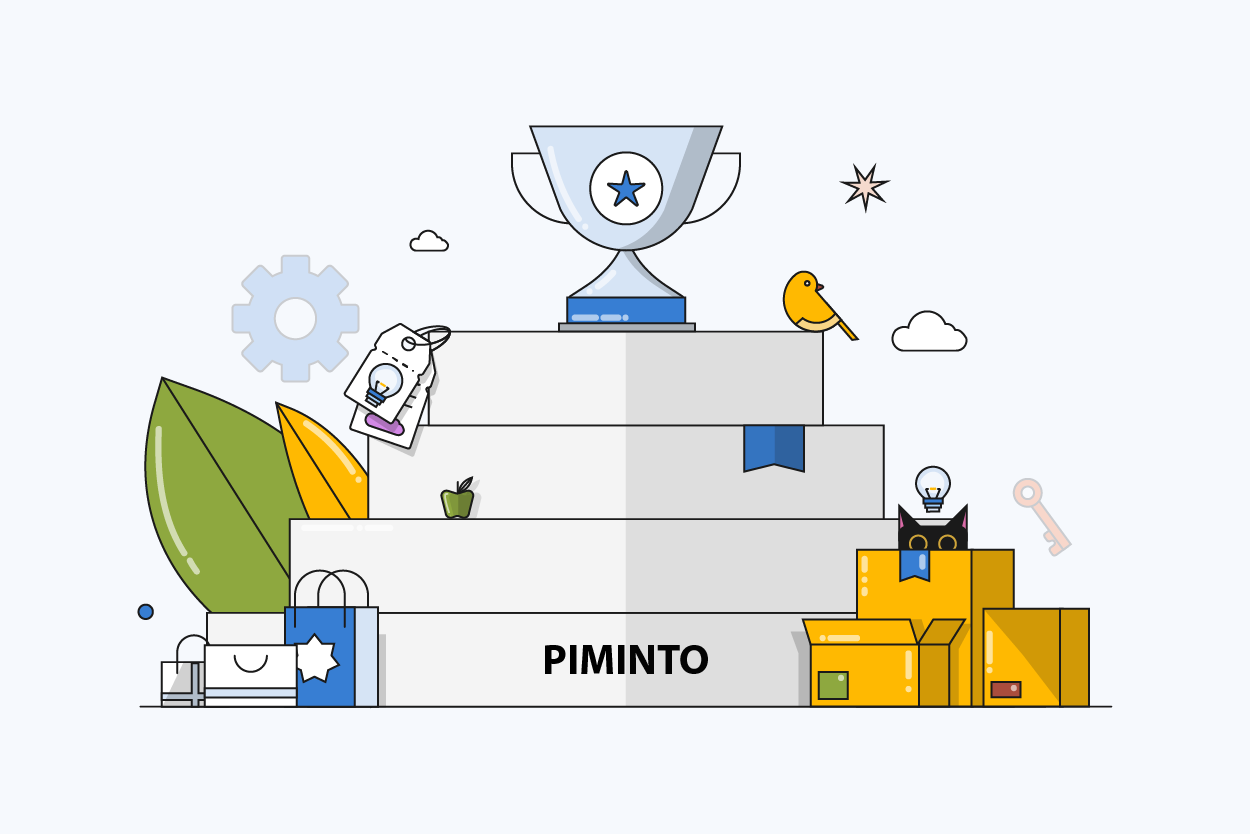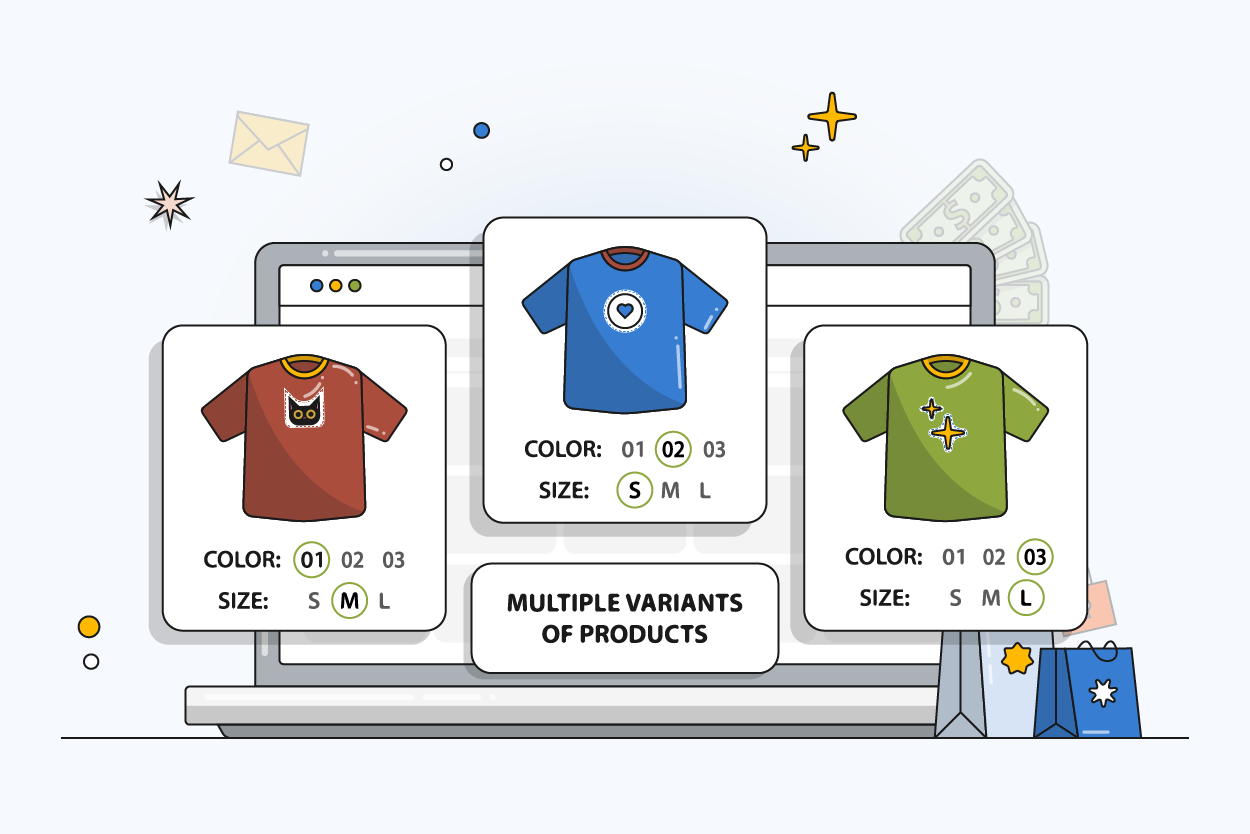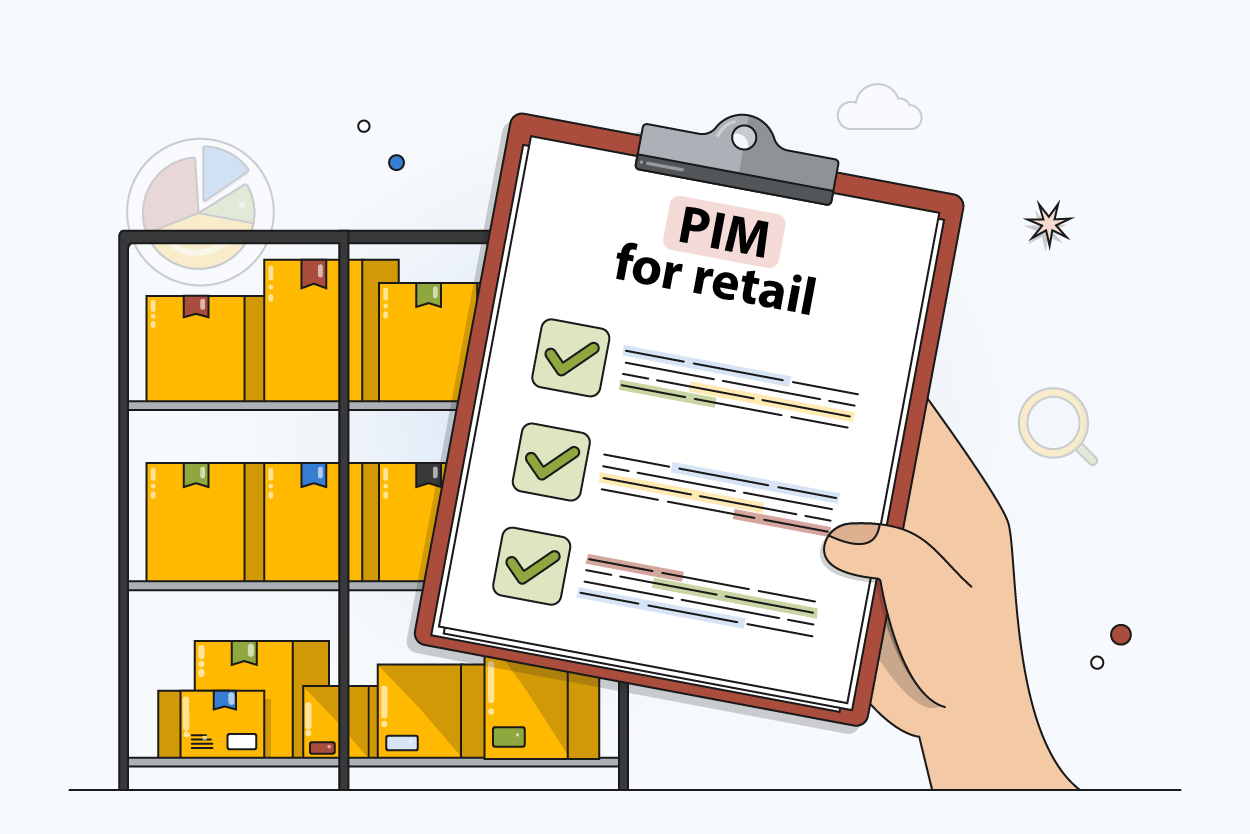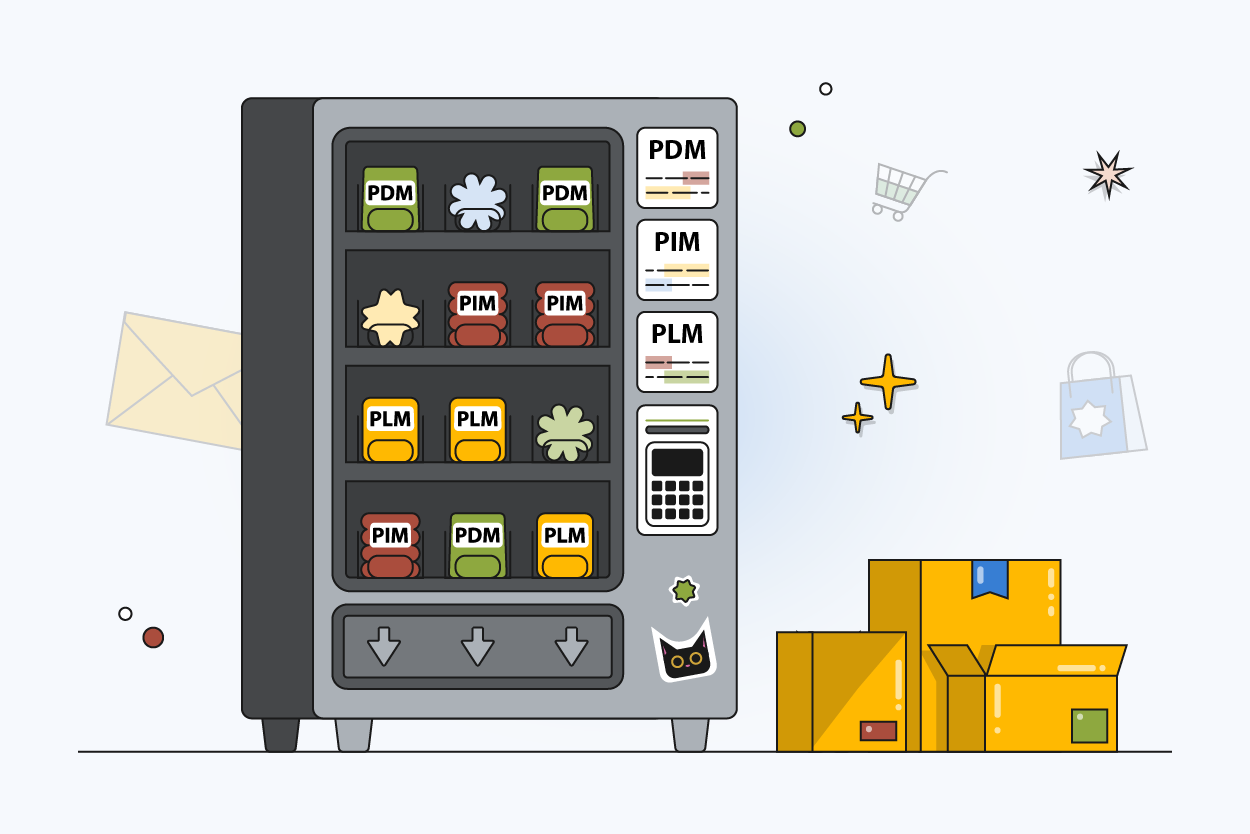Implementing a PIM: Detailed Steps
Author name: Mark Chickering

Implementing product information management becomes a #1 question for those who want to use these solutions for better performance and better control over the system. PIM also becomes crucial for creating e-catalogs and making the Ecommecre content distribution more effective.
With PIM, you will increase the efficiency of your business and help you increase your sales and make your product more valuable. Still, the implementation of product information management won’t happen with a finger-snap, as you have to follow several steps to do it. The best way to perform an effective implementation of a PIM solution is to use a roadmap that highlights key steps, shows how to work with the data, and shows the value of product information management. Keep reading because the following guide will show everything you need to know about the PIM.

PIM Implementation Plan
As said, the PIM implementation plan is like a roadmap, showing all the steps and parts that help you increase your management capabilities, including data collection, analysis, and integration. Below are the most important steps to follow to make product information management work.
Benefits of PIM Implementation
| Benefit | Description | Impact |
|---|---|---|
| Increased Efficiency | Streamlined product data processes reduce manual work. | Higher productivity |
| Better Data Accuracy | Centralized data management minimizes errors. | Improved quality |
| Enhanced Collaboration | Team members can access and share product data easily. | Greater teamwork |
| Scalability | PIM systems can grow with your business. | Future-ready |
| Improved Customer Experience | Accurate product information leads to happier customers. | Increased loyalty |
Discovery and Design of PIM
It’s an initial part that involves several interviews and meetings with stakeholders. The goal of these actions is to get as much information as possible. Stakeholders should understand how the business works and be able to clarify the goals. You can organize workshops as well to realize how the data flows inside the system and what sources of information are the most valuable for your business. Also, the discovery part helps you understand what departments inside your team receive the data and what share it.
How to choose the right PIM? Here are the most important steps to follow when choosing the proper product information management system:
- Knowing the users. First and foremost, you should understand who will be using the PIM system. Manufacturers, suppliers, content creators, sales managers, and other specialists will use different types of PIM, so they will have different toolsets and features.
- Setting the key functions. Understand what you want your PIM to do. Options include data quality control, management of digital assets, integration with multiple systems, and more.
- Maintaining and scaling your PIM. With good PIM, you make a long-term investment into your business. On the way, you will surely have issues of maintenance and scalability. For example, you’ll have to calculate the cost of upgrades, replacements, and other situations.
- Data distribution challenges. Most of the resources you use are related to data distribution, and during the PIM selection, you have to keep in mind that such a system may have issues and challenges. You should remember downstream integrations, multi-language support, and other factors that directly depend on your performance.
- Get a team of stakeholders. This team should include major workers from all the departments (marketing, IT, sales, product team, technical documentation, etc.). They will share their needs and reveal key features that should be integrated into your PIM system.
- Highlight necessary features. Take notes about the main features that should be integrated into the system. For example, if you will need to integrate it with other software or launch an inventory control feature, it should be mentioned as well.
PIM vs ERP vs MDM: Which System Do You Need?
Choosing the right system is critical for successful implementation. Understand the key differences between PIM, ERP, and MDM to make an informed decision.
The Data Modeling Phase
At this stage, you analyze the gathered information to make the product information management more effective (it will be done according to the existing requirements). You also launch the data modeling to spot features and understand how product information management actually operates. You should be precise and clearly identify the key attributes:
- Taxonomy
- Formats
- Structure
You can also clarify the language localization of the product data and make sure it meets the existing requirements of the data recipients. With a well-organized PIM structure, you won’t have problems building an architecture because proper information management solutions allow you to define most of the data flows.
Creating Multiple Variants of Products
This point is essential if your products are released in multiple variants (for example, clothes in different colors and sizes). You have to create variants for all possible combinations and provide detailed information about each product (visual appearance, cost, size, colors, price rates, etc.). If it’s the first time for you, follow these steps:
- Understand your products' attributes. Define the attributes your products have. These are the characteristics that vary depending on the version. If it’s clothes, you have one set of attributes, but if it’s something else, the list changes.
- Create variants. Combine the available options for your products. For example, a shirt that comes in three different sizes and three colors will have nine different options. You have to present all the available options.
- Approving all the variants. Finally, you have to verify the selected options. You have to make sure the information matches the requirements you set at the beginning.
Notice that all the variants should receive a unique stock keeping unit (SKU), as it allows you to track all the products. Also, consider getting unique pictures and price tags for each of them.
PIM Migration and Configuration
Once you have a structure for your data catalog and have set up your PIM database, it’s time to define how the product data is entered into the PIM platform. You can manage the data import to be either manual or automotive. Consider the layer when searching for the best migration layer to use for transportation. Depending on the company’s needs, the migration could be set at night time or be performed during the day.
Integration of PIM
During the integration, you combine PIM solutions with tools and systems your system uses, and it helps you synchronize the information between the systems. You will see how it improves the data structure and makes the data more consistent. In the beginning, implement PIM in a single department to see how it works. Launch several sessions, test the workflow, and analyze the feedback. Once it goes well, let all the team members use PIM.
Key Features of a PIM System
| Feature | Description | Benefits |
|---|---|---|
| Centralized Database | Store all product information in one place for easy access. | Streamlined management |
| Multi-Channel Publishing | Distribute product data across various sales channels seamlessly. | Wider reach |
| Data Enrichment | Enhance product information with additional attributes and media. | Improved product appeal |
| Bulk Editing | Update multiple product details simultaneously. | Time savings |
| Analytics and Reporting | Generate insights on product performance and data quality. | Informed decision-making |
Highlight the Output of the PIM Solution
During the actual usage of the PIM solution, you have to determine where your product data will be delivered. You can share the information using websites, marketplaces, and printed catalogs. You not only use all the available options to showcase your product but also understand what channels are the most effective for data sharing. Another advantage for you to use is to define key types of data consumers in your ecosystem and adapt them to users’ needs.
Keep in mind that using different distribution channels may require more data formats and various sharing methods. The more data formats you use, the more varied your PIM model and design will be in the end.
Methodology of PIM Implementation
Now, let’s talk more about the PIM implementation methodology. These words may scare you, but there’s nothing complicated in this part because you have everything explained in simple words. Let’s get through the most important points of PIM implementation methodology.
Create a Plan
The initial planning involves the team that will use PIM and those who will implement it in the system. It’s the process of setting goals and milestones, finding issues, and deciding how to eliminate them. With the help of AI-based tools that advance communication options and deliver a better experience.
Set up the Environment
The next step is about creating an environment that matches the needs of your project. This includes:
- Deploying the code
- Connecting emails
- Controlling sources
- Creating backups
With a nicely done setup, you will be able to track any code changes and control the ERP production environment.
Gather Info about Requirements
To effectively implement product information management solutions, we have to get as much information about your project as needed. The understanding of the requirements helps our experts realize what you need and how we can adapt the PIM system to these needs. For example, we may need data model definitions, UAT test cases, and specifications of integrations.
Designing the Solution
When we have all the necessary information about the project, our specialists start designing the solution. We consider inbound and outbound system interfaces, transformations, validations, business rules, and other factors.
Building the Solution
This point of the methodology involves configuration and customization of the PIM solution as it will meet the needs of the client. At this stage, data migration samples that have been used multiple times become essential for digital assets implementation.
Need Help Choosing the Best PIM Software?
With so many PIM solutions available, selecting the right one can be overwhelming. Compare the top 7 PIM platforms for 2025 based on features, pricing, and use cases.
What To Do With Your Data While Implementing a PIM System?
Everything that happens when you work with product information management is about data. To ensure your system is integrated well and works perfectly, you have to follow the steps below.
Gather Data
Before you start working with data using your PIM system, it’s essential to understand what information is the most important (to save it) and what is unneeded (to remove it). If your data management model works with a multichannel system, separate the data depending on its size and purpose. Divide files into categories. so it will be easier to find the needed data and get to work when you start using PIM. Since product information management relies on a single source of truth, you only need to search for a specific file, image, or document, and it will appear. Also, consider making the file attributes match their actual names to make the data SEO-friendly and user-friendly, as it will positively impact the workflow in the future.
Check Your Data
The next step is data validation. You have to check all the files to ensure they don’t contain errors or duplicates to match the appropriate quality level. For example, if you see that the information is over-spammed with multiple abbreviations or contains too many misspellings, it should be cleared. It’s good to complete the data check before transporting it to the PIM platform.
Set up the Data Governance Policy
This is an essential step on your way to data implementation. You have to make sure your data is secured and remains under control. You can manage access to the system so only authorized users can work with PIM. This may be a good decision to prevent potential data leaks and mistakes. Give data administrators the right to block the system, and it will remain available only to those who can authorize it.
Highlighting Product Data Attributes
The right data attributes are the foundation of successful PIM practices. Divide your attributes into groups to accelerate their enrichment. If specific data unifies attributes, compound them (if you are sure there is no reason to display them separately). Once you start using the right product data attributes, you will see the positive dynamic in changing the number of sales.
Organizing Data Migration
Product data can move to PIM channels in several ways, depending on the size of the information and the team that receives it. For example, if you remove the data from the old PIM system and add it to a new one, it could happen in several steps. However, if data migration is not an option, keep using both systems and integrate one into another.
Run Tests
Before launching the actual product, it’s essential to run several tests. You should do it slowly to make sure everything is synchronized and works properly. By launching several tests, you are not only seeing data compatibility but also checking its effectiveness. Tests also reveal weak points, so you will know what should be changed in the near future.
Monitor the PIM System for Further Improvements
Simply launching PIM is not enough. To succeed and constantly receive positive results, you have to analyze product information management solutions and note everything. Even the small changes in the workflow may be crucial as they show you what should be improved or changed. For example, at some point, you may realize that there should be more product attributes to represent your products or more sales channels to increase the number of sales. It’s also about adding new pages related to the upcoming products, as you have to prepare all the data (images, descriptions, price tags, etc.) and ensure the page works well. You have to perform regular changes to ensure the data is up-to-date and whether there is something you can improve for a better performance.
Why Should You Consider Implementing A PIM System?
If we talk about the “for” and “against” of implementing a product information management system in your business, there are multiple reasons why you should do it. Let’s run through them quickly.
- You get your data management centralized. Add the data is gathered in one location, and it’s much easier to manage, update, and maintain everything you need across multiple channels. If some of your workers may need access to the data, they can get it quickly.
- The quality of the data is improved. When gathering, processing, and sharing information, you ensure it is always of the highest quality by avoiding mistakes and inconsistencies or minimizing their level as much as possible.
- Fast time-to-market. You launch new products and update them very quickly. With this, cross-platform distribution becomes extremely fast.
- Improved customer experience. Since you deliver consistent and accurate product data, the level of trust among customers grows, which helps you increase sales.
- Collaboration. Product information management leads to a better collaboration experience since it brings you a unified platform for product information. You have zero issues combining data, analyzing it, etc.
- Lower return rates. With detailed product information, customers can make decisions and purchase the needed products, reducing the overall return rate and making your business successful.
These are the most important advantage points you receive after implementing PIM into your system.
How to Overcome Potential Challenges when Implementing a PIM
Some people hesitate to implement a PIM system for various reasons. Some think that the integration process may take too long or have issues that prevent them from doing it fast. Anyway, there is a bit of hesitation, but it should not stop you. We understand how complicated PIM integration may be, and that’s why we show you several steps that will help you avoid possible pitfalls.
Data Inaccuracy Issues
When a company starts working with product information management solutions, it may involve users from different departments. They mix the information, which may lead to multiple mistakes. You can avoid that by using backups and activity logs. You will be able to track the activity and control the performance. When you have everything under control, you will minimize the percentage of inaccuracy.
Getting Started With Non-technical Users
This is also a problem of sharing the information across multiple departments using PIM. When you involve sales managers, marketers, and other workers in the system, they may find the onboarding challenging. The solution to the problem is to adapt a product information management system to the needs of each worker. You can also conduct several workshops to ensure everyone understands how to use the system.
The Involvement of Multiple Parts
The more people are involved in operations inside the PIM system, the more channels and relations appear. It increases the number of discussions and possible disagreements, slowing down the integration process.
To avoid this problem, you should have a person who will be completely responsible for the workflow on PIM. This expert should have extensive knowledge of your business so he or she close the gaps and eliminate distractions before they cause problems.
Unlocking Your Business Success Through Effective PIM Implementation
Effective PIM implementation is key to successful performance in any type of business. Once you get all the data under control with a single source of truth, you speed up time-to-market and increase customer experience. Still, it may be complicated to implement new solutions without professional assistance. That’s why you need PIMinto. Our experts will analyze the entire system of your business and go through all the needed steps to ensure it works well. Act today and make changes to make your business successful.
Ready to Implement PIM Successfully?
Schedule a free consultation with PIMinto experts to discuss your implementation strategy and get personalized recommendations.
Modified on: 2023-06-07



